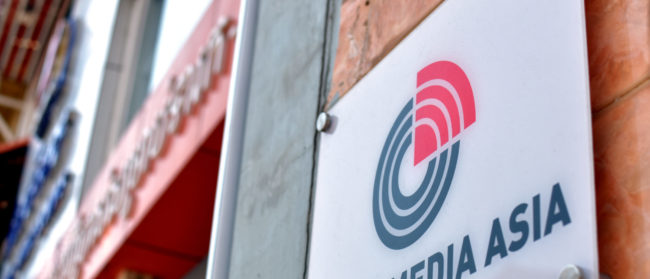Gangs of humans follow troops of monkeys in Angkor Archaeological Park. In the shadow of Bayon Temple, bloggers spend their days documenting every move the long-tailed macaques make.
“I got into filming monkeys because I see them as a natural resource in Cambodia and I wanted to turn that into a passion,” said Sokhon Leak, whose daily monkey content has led to thousands of YouTube subscribers. “But nowadays, these monkeys come with controversy.”
This particular monkey business is on the ropes. Controversies about macaque management and concerns over the effect of human exposure on monkey behaviour has led to a steady decline in videographers. The benefits bloggers reap from filming macaques, however, are peanuts compared to the real monkey business in Cambodia: captive breeding and exportation.
Business is booming. Long-tailed macaques are among the most traded primates in the world because of their use in scientific research and Cambodia is one of the leading global exporters of the monkey.
Cambodia has contributed for decades, but following the outbreak of the Covid-19 pandemic the country began dominating the market.
Export and import data from the Convention on International Trade in Endangered Species of Wild Fauna and Flora (CITES), showed the Kingdom traded more than 32,300 macaques in 2020, which was nearly double what the country traded the year before. Three of every five of those monkeys Cambodia exported to the United States. This made up 78.5% of the known global macaque trade that year.
While animal rights activists demand an end to the scientific use of macaques, conservationists worry captive-breeding farms are contributing to the decline of wild populations, especially after the long-tailed macaques were uplisted to “vulnerable” by the International Union for Conservation of Nature’s Red List of threatened species.
The full scope of the macaque market in Cambodia remains murky. With no public government assessments, no process to independently inspect farms and an international trade known to have an accuracy gap, the extent of breeding operations, the treatment of individual animals and the potential for an illegal trade is left to the imagination.
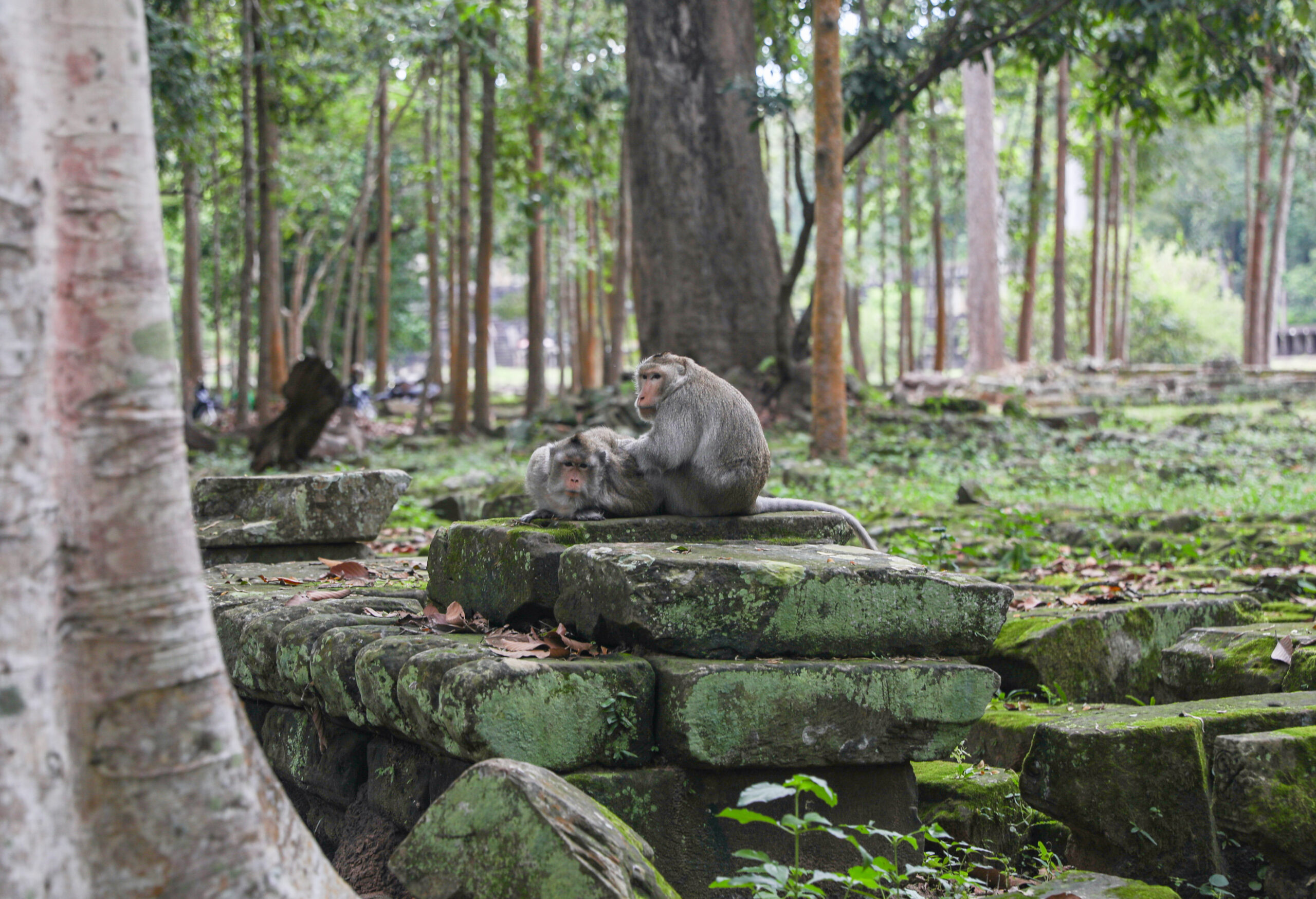
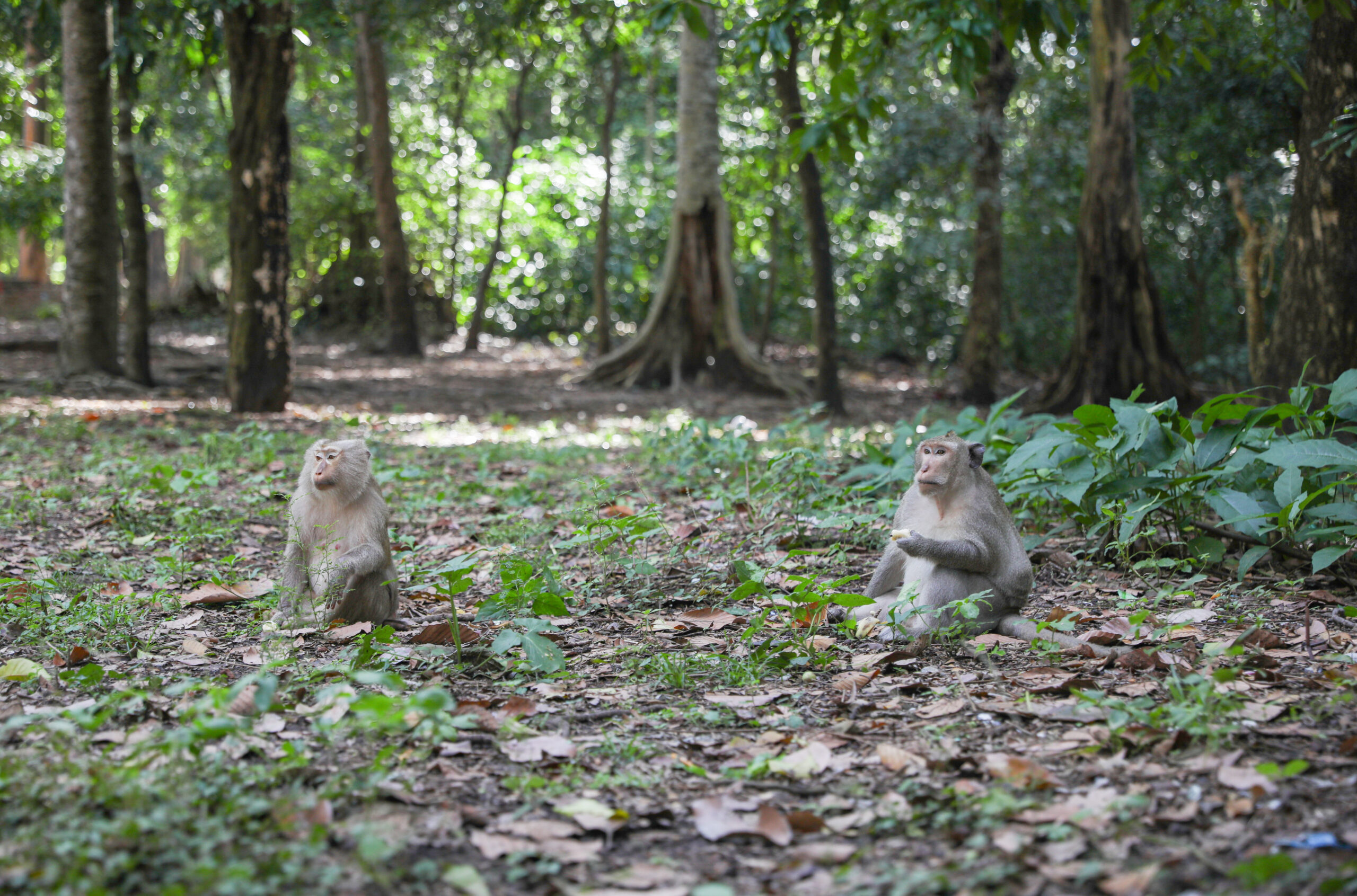
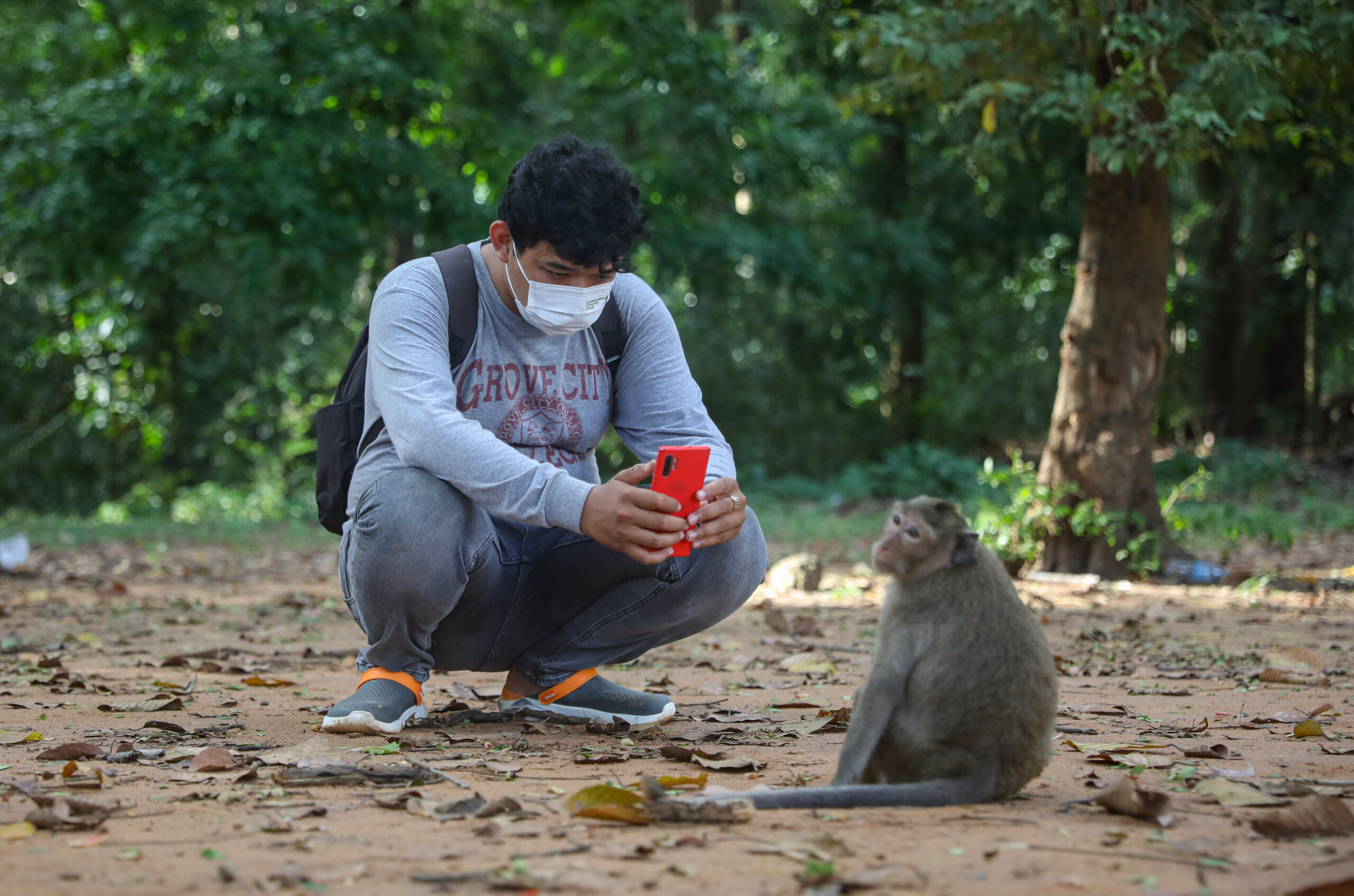
Midspeech Leak chased after a macaque that started nibbling on a half-finished cob of corn. Alongside a band of bloggers, Leak has spent much of his time around Bayon Temple, home to one of the largest monkey troops at Angkor Park.
“I’d say there are only 12 or so of the most passionate bloggers left,” Leak said. “Our original group had nearly 60 people, but a lot dropped off as more monkeys were removed.”
More than a dozen macaques were captured around Bayon Temple in a 2020 roundup by APSARA National Authority, the agency that oversees the world-renowned archaeological park. The next year, approximately 20 were caught in a roundup near Wat Phnom in Phnom Penh by the municipal forestry administration.
In both instances, authorities attributed the reasoning for the roundups to the behaviour of the macaques. Long Kosal, APSARA deputy-director general, said the monkeys were known to harass tourists for food and needed to be removed for human safety.
“I don’t think there will be much of a future in filming these monkeys anymore because the authorities keep capturing the monkeys and sending them outside the region,” Leak said. “There are just a lot less monkeys.”
Interactions between humans and monkeys are common across the region, with native populations of macaques in Cambodia, Laos, Thailand, Vietnam and other Southeast Asian countries.
Andie Ang, president of the Jane Goodall Institute in Singapore, said humans are the catalysts for these interactions turning into conflicts.
“Long-tailed macaques are getting used to people because we keep feeding them, which teaches them humans equal free food,” Ang said. “Not only is this unhealthy for the monkeys, but it is the root cause for these conflicts. We are causing monkeys to lose their natural fear of people, making them bolder the hungrier they get.”
These behavioural changes are especially common for long-tailed macaques, which can adapt easily to a human diet because they are omnivorous, eating plants and animal-based food.
Food conflicts are the climax of a cyclical cycle that Ang said starts and ends with poor human decisions.
Developments encroach on wildlife habitat. This exposes monkeys to human food, which they adapt to and lose their fear of people in the process. With this new norm established, macaques with the munchies begin seeking out humans. This can lead to conflict, which humans respond to by killing or capturing monkeys.
“People want the quickest and fastest solution. So we reduce monkeys to reduce conflict,” Ang said. “But the problem never goes away because we are only responding to monkey behaviour instead of addressing human behaviour.”
Realtering monkey dependence on people for food, which would take at least three years with no human interaction, is critical to safeguarding wild macaque populations, Ang said.
“We cannot stop development from happening but we can change the way we go around doing it by properly planning how a development is going to affect the natural world,” Ang said. “We really need to reexamine our relationship with wildlife.”
Public awareness programs in Hong Kong and Singapore were established to reduce the intentional and unintentional feeding.
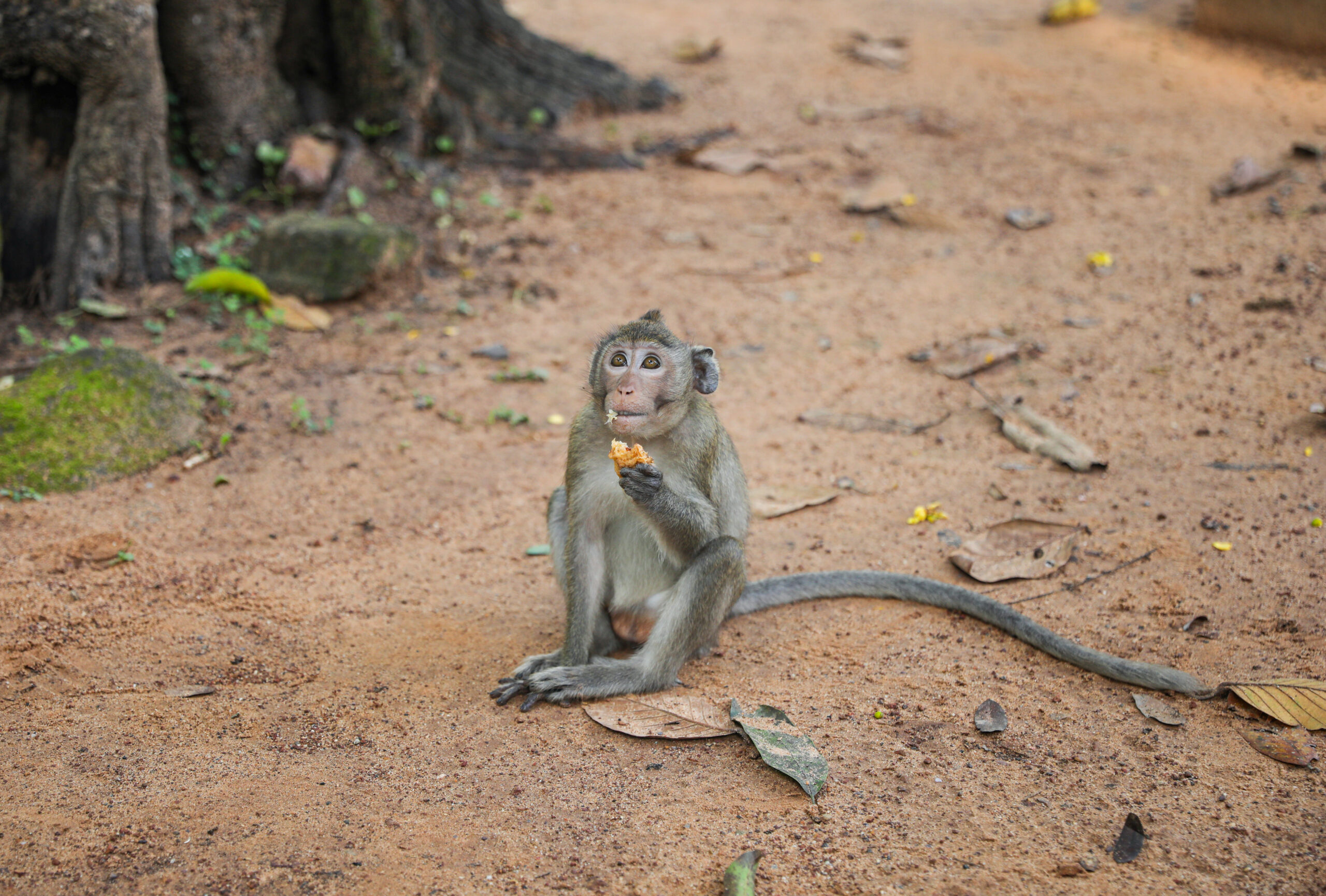
Intentionally feeding monkeys has been criminalised in both countries. Fines in Hong Kong can reach HKD 10,000 ($1,283), while in Singapore a person was fined SGD 500 ($372) with an accompanying citation reading, “You did feed monkeys with peanuts in contravention.”
For unintentional feeders, programmes have focused on suggestions to “monkey-proof” homes by installing mesh window screens, keeping prayer offerings inside, double-knotting garbage bags and securing bins with elastic straps or cords.
While implementing similar policies across Cambodia may be unrealistic, Ang said these programmes are replicated by authorities in areas, such as Angkor Park and Phnom Penh, with high densities of humans and monkeys.
“We want to minimise any harm to people and wild animals. In zones where there is a lot more potential for human-wildlife interaction, you need to eliminate food sources,” said Ang, who helped launch a No Feeding Campaign in Singapore.
“Cutting off the feeding is the most important thing we need to do, but the positive impact of it might not happen so soon,” Ang said. “It is the solution, and a better one then forever having to do roundups of monkeys, but you need some time to go back to the previous state where the animals don’t approach humans.”
Reverting macaques to their natural behaviour is critical to ecosystem services, from seed dispersal to the monkey serving as prey and predator for a host of forest-dwelling species. This is especially important following the rapid decline of wild populations across the region, Ang said.
Tens of thousands of macaques are traded across the globe every year.
Data annually submitted to CITES, the endangered species convention with 184 signatories including nations and economic organisations, tracks the steady rise of Cambodia’s contributions to the monkey trade since the early 2000s.
From 2004 to 2020, official export data from Cambodia records the export of more than 151,800 long-tailed macaques. The Kingdom’s government records show nearly 94% of those monkeys were sent to the U.S., China and Japan.
The total value of the long-tailed macaque trade from 2010 to 2019 was calculated to be worth nearly $1.26 billion, with an individual macaque stated to be worth several thousand dollars, according to a February 2022 study that compared data from the CITES Trade Database and the UN Comtrade Database.
Cambodia’s legal trade of primates was valued at $11.3 million in 2017 by a separate study. Since then there has been a significant spike in the Kingdom’s macaque trade, from 9,610 traded monkeys in 2018 to 16,640 the next year to 32,634 in 2020.
CITES has regulated the international trade of primates since the 1970s, however, studies by wildlife researchers refer to the existence of an accuracy gap within the official data. The discrepancy is attributed to “accountability issues, inadequate enforcement of existing regulations, inaccurate or incomplete assessments and secrecy,” with researchers referring to CITES data as the “known monkey trade.”
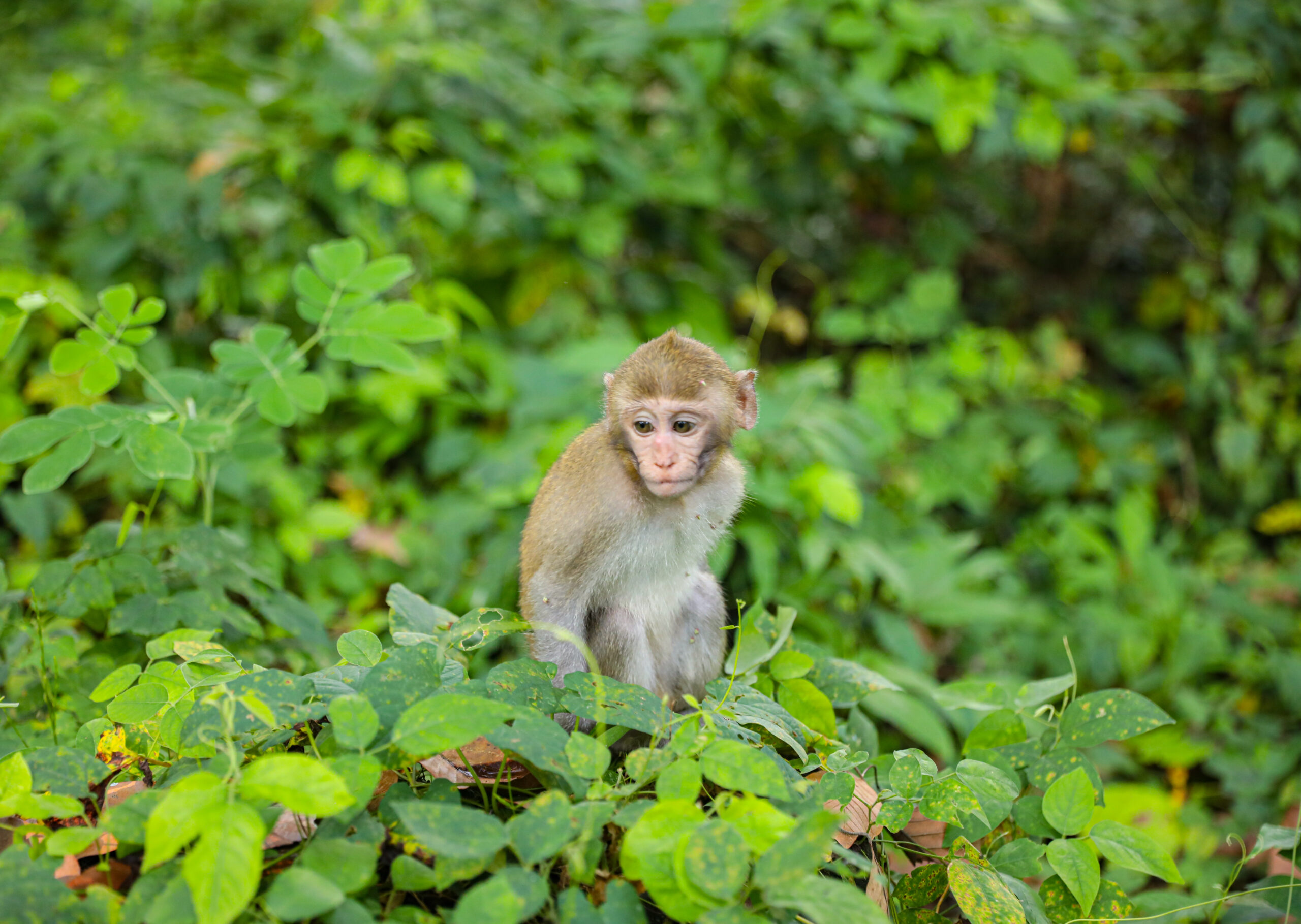
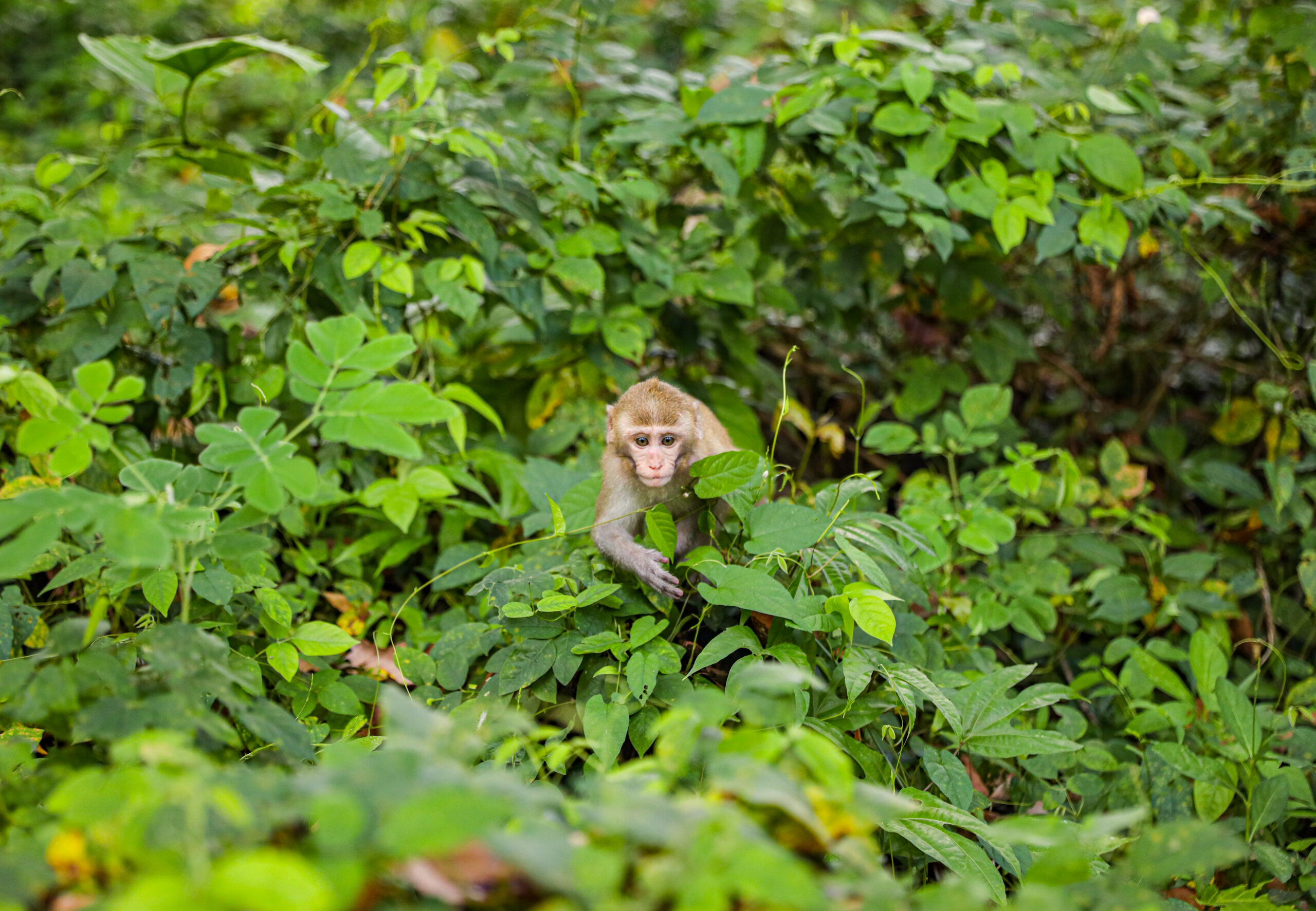
Before Cambodia’s booming exports in long-tailed or crab-eating macaques, macaca fascicularis, India dominated the international market with its trade in the rhesus macaque. That was until the implementation of an export ban in the late 1970s, following reports the U.S. military was using macaques for radiation experiments. While animal rights activists celebrated this as a victory, it was soon clear the ban had done little to quench the research community’s thirst for macaques.
“The research industry found itself devoid of the species they had relied on for years, but instead of taking this as an opportunity to stop animal testing, they turned to the long-tailed macaques,” said Sarah Kite, co-founder of Action for Primates. “These monkeys are mostly used for toxicity tests, basically poisoning experiments, which all lead towards the production of commercial products or drugs for human use.”
China controlled most of the market in long-tailed macaques until, in response to the Covid-19 outbreak, legislation passed banning wildlife trade and transport.
Enter Cambodia. While the Kingdom has contributed to the monkey trade since 2000 – the country’s first CITES recorded export of 360 long-tailed macaques to Vietnam – the annual number of live macaques exported from Cambodia spiked after China’s ban. From nearly 14,000 monkeys in 2019 to almost 29,500 in 2020. The majority of those were sent to the U.S. labelled as commercial or scientific.
Macaques were used for Covid-19 research to create a “new model to test preventive and therapeutic strategies.” Export data from last year is not expected to be available until November 2022.
“We are concerned that the dramatic increase in exports of long-tailed macaques from Cambodia that occurred in 2020, will have increased even further during 2021,” Kite said. “This increase can be explained partly as a result of the pandemic and an increase in demand for monkeys.”
Captive-breeding facilities, or farms, supply Cambodia’s contributions to the global macaque trade.
In 2014, a document from the CITES Management Authority of Cambodia submitted to the CITES Secretariat confirmed the existence of six private, captive-breeding farms in the Kingdom.
The document stated from 2010 to mid-2014 the farms had a total stock of more than 81,900 individuals. In the same 4.5-year time frame, these farms recorded exporting approximately 26,190 macaques — indicating a substantial growth in operations, given that in 2020 alone the Kingdom recorded exporting more than 29,466 macaques.
As of July 30, 2014, the six farms were stated to have a remaining stock of 55,739 macaques. This document provides the only available information on these farms from the Ministry of Agriculture, Forestry and Fisheries, which issues the permits for captive-breeding facilities.
Thuok Nao, chairman of the management authority in Cambodia and secretary of state at the Ministry of Agriculture, Forestry and Fisheries, said he was not the “authorised speaker of the ministry” and declined to be interviewed.
Omaliss Keo, chairman of the CITES Scientific Authority for terrestrial forest and wildlife resources and director general of the Forestry Administration, is said to be the “authorised speaker of the ministry.” Omaliss was unavailable for comment.
“At first, the macaques were purely wild-caught, meaning thousands were being taken from the forests of Southeast Asia to fuel this market,” Kite said. “Then there was this move towards captive breeding, but to do that monkeys continued to be trapped in the wild for breeding purposes. That is how we ended up with these large-scale farms, which are terrible for the survival of the overall species.”
According to the document, from 2003 to 2009, the quota for the permitted capture of wild long-tailed macaques for use in the farms as breeding stock was 37,780 individuals. In 2010, permits for the capture of wild macaques were “suspended” for at least five years until more “comprehensive assessments” were conducted, according to the document. Over email, Nao stated “since 2014, no captures from the wild has been allowed.”
Whether these comprehensive assessments were conducted or not is unclear. Results have never been published by the Forestry Administration, nor is there any information available regarding more recent permits for wild capture.
In an email response, Nao stated five of the farms were in “various degree of operation.” According to Nao, the Forestry Administration visited three of the farms at the end of 2020, but were unable to count the macaque stocks in 2021. He said he didn’t “have the documents to share” from these visits.
“The update to ‘vulnerable’ can help us in terms of our communication with the different governments, and also with different policymakers and authorities, to hopefully increase the protection efforts of the species,” said Malene Friis Hansen, co-founder and director of the Long-tailed Macaque Project, a charity raising awareness about the macaque. She was referring to the IUCN uplisting the macaque to the “vulnerable” status last year.
The IUCN’s species assessment, which lists “biological resource use” as a leading threat to the macaque, states, “In mainland Southeast Asia, such as in Cambodia and Vietnam, females are taken into breeding facilities and males are exported internationally primarily for use in laboratory research.”
A January report by the World Wide Fund for Nature-Greater Mekong on the status, threats and conservation of the region’s primates explained “it is likely that many of the recipient research facilities, which do not prioritise animal welfare, are laundering wild-caught primates through legal trade.”
Kandasamy Yoganand, the WWF-Greater Mekong regional lead for wildlife and wildlife crime, confirmed “there is enough evidence to show there are wild-caught macaques laundered as farmed animals and legally traded.”
”The legal trade generally stimulates demand for wildlife, whether it’s macaques or any other species, because people think it is okay to consume legal trade,” said Yoganand, who is based in Vientiane. “People associate ‘legal’ with many other things and make a judgement that it is okay. But that’s not the case, legal is just a paper that says the trade aligns with a government policy.”
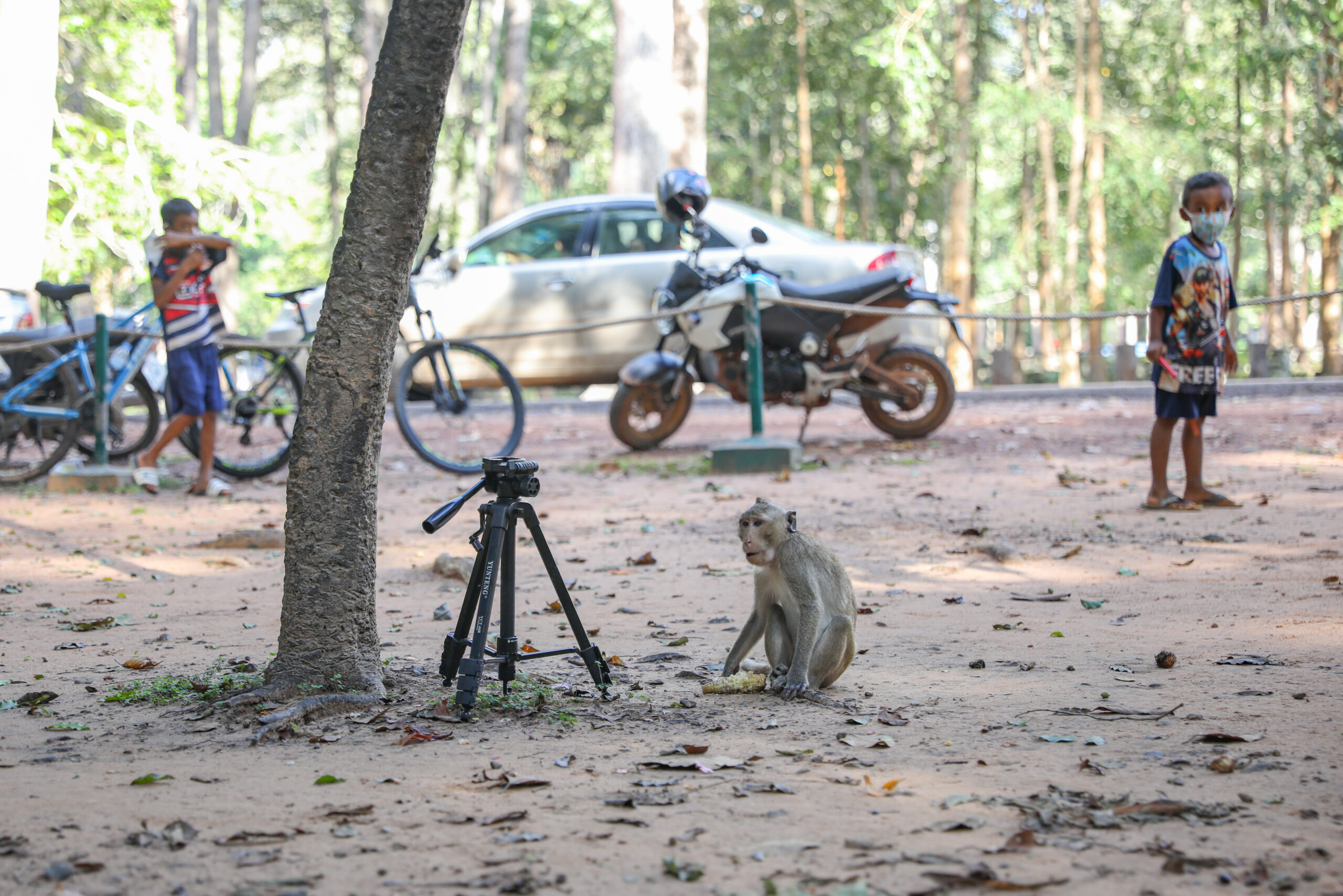
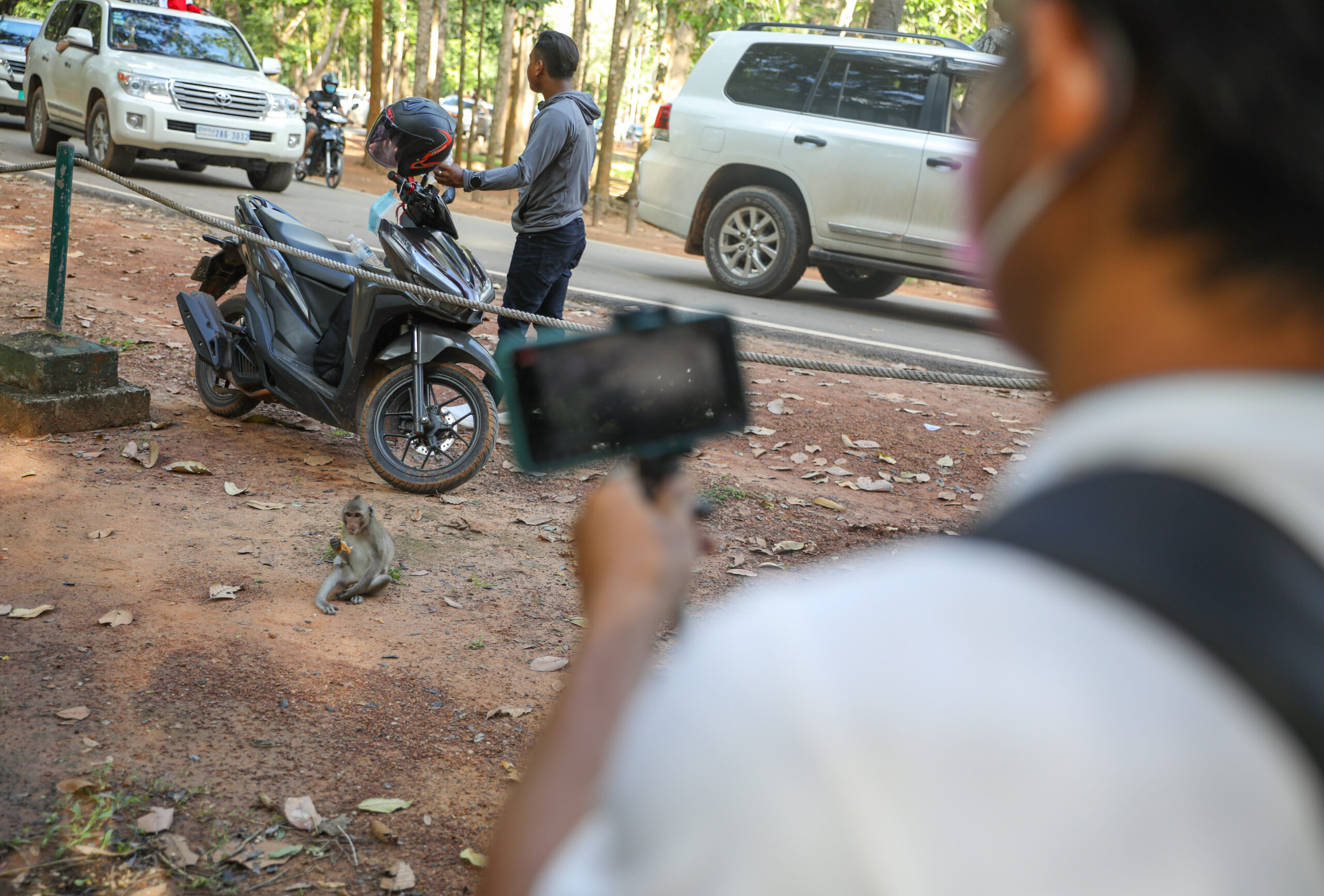
Primatologists and activists agree only a two-pronged approach regulating suppliers and customers, often research laboratories, will keep wild-caught macaques from being laundered through the legal primate trade.
“Without a demand, you won’t have a supply. We focused for years on the supplier,” Hansen said. “The research and investigations are always on the supplier. What are they doing in the habitat countries? Why are they trading the species? Why are they harvesting? Well, that’s because there is a demand. We need to swap it around.”
Biomedical research facilities should only conduct business with captive-breeding farms on the condition that farms can be inspected independently, Hansen said.
“If you cannot visit a breeding facility something fishy is going on. It’s murky and with the lack of transparency you start to wonder,” Hansen said. Later stating “we need to make requirements that the facilities testing and creating all of these products take an ethical stand.”
Importing countries and laboratories testing on macaques had the responsibility to “do further checks, due diligence,” Yoganand said. He advised verifying the conditions of farms in exporting countries, independent of the exporting company and the respective government.
To incentivise this ethical stand by researchers, Hansen said publishers and journals should refuse research papers using macaques without independently-verified proof of ethical and legal treatment.
“This is a plea to biomedical research facilities, a plea to scientific publishers and a plea to consumers,” Hansen said. “If you are going to do this business, you need to do it from reputed facilities that have good animal welfare.”
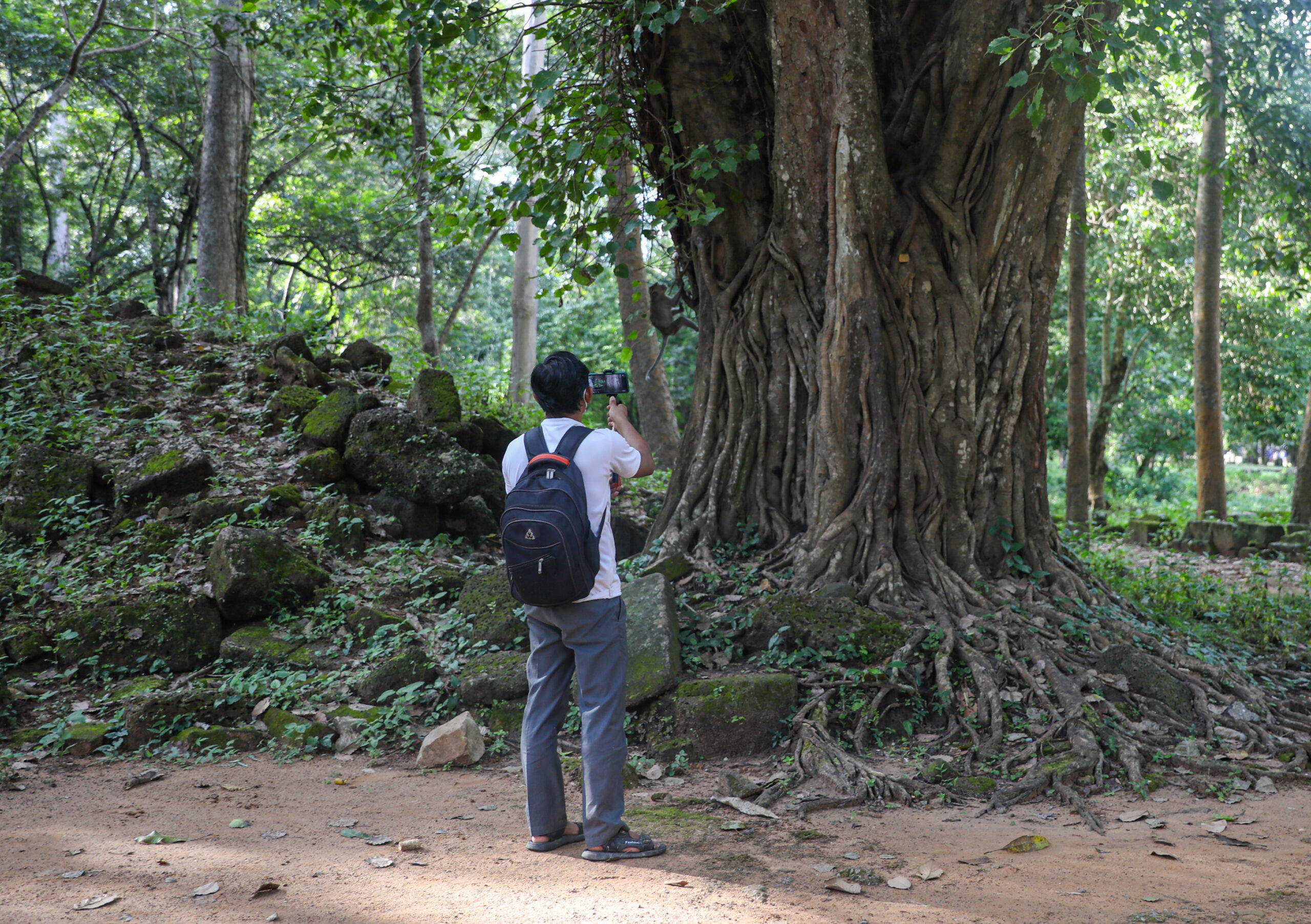
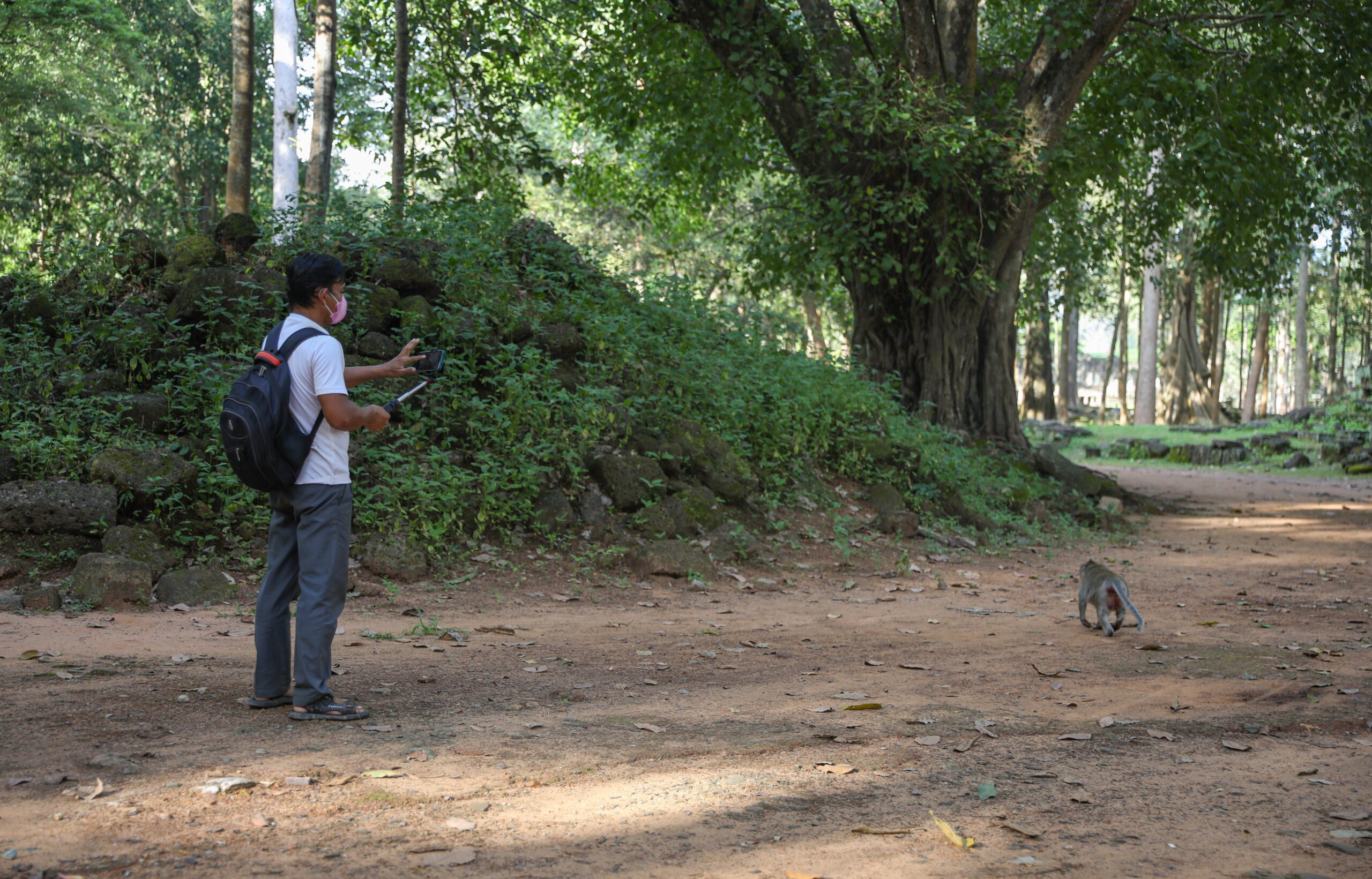
The possibility of site visits or independent inspections in Cambodia is unclear. In an email statement, Nao said farm visits have been denied because of Covid-19 and asked interested groups to “please kindly wait until after the pandemic” to visit.
Nick Marx, director of wildlife rescue and care for Wildlife Alliance, said the organisation has not been allowed entry into any of the captive-breeding farms for inspections, nor has Wildlife Alliance been given figures detailing the number of macaques at the facilities. Many of these requests, Marx said, were denied before the pandemic.
If you cannot visit a breeding facility something fishy is going on. It’s murky and with the lack of transparency you start to wonder”
Malene Friis Hansen, co-founder and director, Long-tailed Macaque Project
“I’m not saying I want any trade in long-tailed macaques,” Marx said. “But the middle ground might be to clean the whole thing up. Because of the smokescreen around things right now, what the imagination conjures up could be happening is quite terrifying.”
The 2014 document from the CITES Management Authority of Cambodia listed the Forestry Administration’s responsibility in “monitoring and controlling” farms. This included counting the number of macaques in farms annually and ensuring the facilities meet standards for animal health, export quarantine, food preparation and veterinary care.
Proof and documentation of these visits are not public.
“Without proof, we cannot say there is or isn’t an illegal trade in long-tailed macaques coming from Cambodia,” Marx said. “It would benefit long-tailed macaques and Cambodia if there were clearer records, and if some kind of inspections were allowed.”
“If everything was up front with the export of long-tailed macaques, I don’t think that anybody would have a problem with giving numbers and with inspections,” Marx said.
Photos by Anton L. Delgado for Southeast Asia Globe


